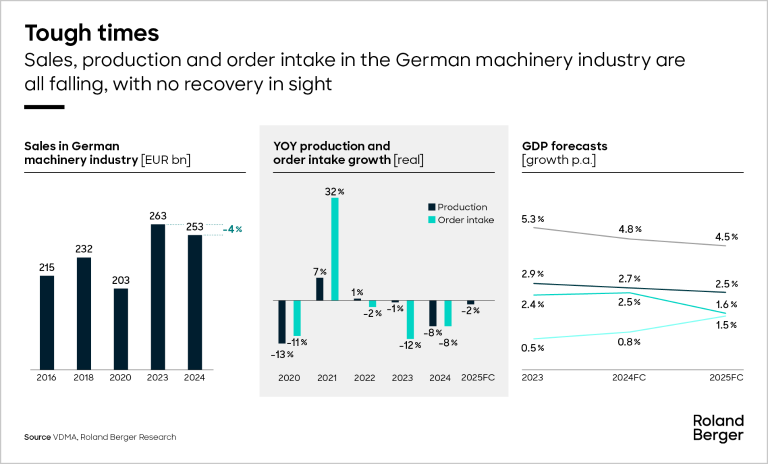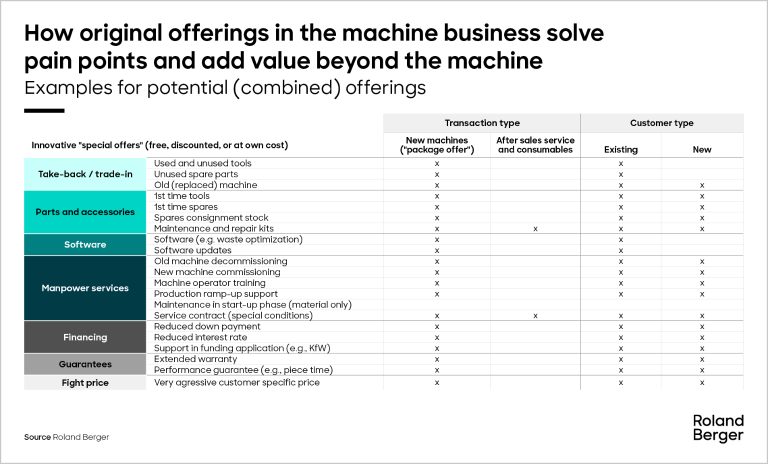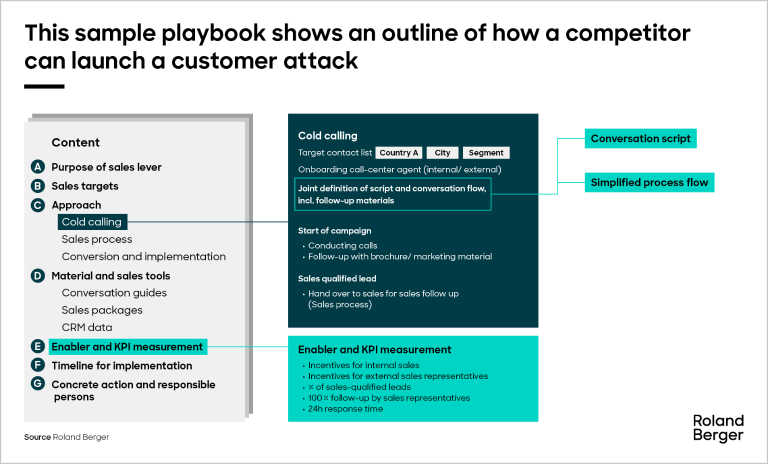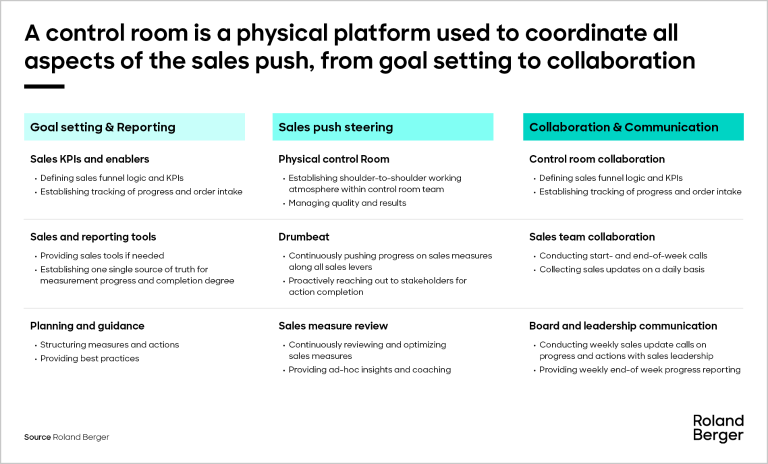A challenging outlook for industrial automation in 2025, but after a short breather, we believe robust growth will be back in the pipeline and expect improvement through 2030.


Sales push in the machine equipment industry
By Sven Siepen and Oliver Herweg
A rapid, low-cost counter-measure to falling revenue
With orders in the machinery industry falling due to the challenging economic environment, a sales push offers a fast, uncomplicated way to reverse declining revenues. Companies can draw on existing resources to activate simple levers that have been proven to increase order intakes by 10%. In this article we outline the process and describe the key levers and benefits.
The machinery industry is in reverse. After several years of strong growth, orders are now 22% below 2022 levels. Production volumes in 2025 are expected to sink for a third consecutive year as orders dry up. On top of this, the global economy is weakening, and rising geopolitical uncertainties – from slower growth in China to regional conflicts and damaging trade wars – are undermining growth

The crises are having a drastic effect on the industry. Almost half (45%) of German machinery companies have begun, or plan to begin, short-time work, for example, while the strong cost pressures around energy and material prices, interest rates and anticipated tariffs have already forced the first companies into bankruptcy. The situation is not expected to improve in the short term.
"In a downturn, speed and simplicity win. A focused sales push turns uncertainty into opportunity—fast."
So what should companies do to ride out the storm? Many have already acted, introducing short-time work and cost-reduction programs. But while effective, these are reactive measures that are challenging and time-consuming to manage, and do little to promote growth. A sales push is different.
Why a sales push?
Sales pushes are proactive, simple and quick-to-implement measures that drive revenues in difficult times, not just in the machine industry but any industry. They have three aims:
- Increase hit rates from the existing order pipeline
- Proactively generate new leads from existing customers
- Identify and capture new customers
How can this be achieved? There are multiple levers available. These are not revolutionary tools but just fast and practical ideas for tighter sales steering and new, value-adding and differentiating customer offerings. They push the sales team to step up a gear and take a more stringent approach that goes beyond the daily norm, making them more proactive, systematic and effective – without the need for extra resources.
Three levers are key to a successful sales push:
-
Novel “rapid” offerings
By pushing original, quick-to-implement offers that address customer pain points and allow them to do more, machinery companies can generate new leads and order intake. Such offers might include trade-ins on old machines, buying customers’ old tools, free software or support in public funding applications in return for buying new machines. In short, such new offerings must clearly demonstrate that the machinery supplier is prepared to go the extra mile.
Where suppliers already know the customer, they should review its installed base to identify opportunities to proactively offer machine replacements coupled with such attractive new products. To secure new customers, suppliers must systematically search for opportunities that leverage recent contacts from trade fairs or company databases in regional markets.
-
Playbooks
Once an attractive offerings formula is developed, suppliers should create playbooks for their sales teams to ensure an effective sales approach to existing and new customers. These describe the campaign strategies, priorities for immediate extra sales activities and convincing sales arguments to generate new leads and convert offers.
-
Control room
A key difference between the sales push and day-to-day sales activities is that the sales push is even more systematically managed – especially when it comes to creating a sense of urgency across the sales teams. This is done from a “control room”, a physical space that acts as a center of operations for the sales push. Its main function is to provide a one-stop-shop of fully transparent data on sales status, achievements and performance of the sales teams. This is critical for management to effectively steer and coordinate activities and resources. For example, the control room is used to collect and display data on new leads, conversion rates and the sales team’s success in meeting weekly targets (number of calls, sales made, etc.). This helps to ensure transparency and monitor progress. The control room also acts as a hub for sales tools, tips and collaboration.
How to implement a sales push
The primary benefit of these levers is that they are easy to set up. Results can be rapidly achieved because they simply apply a more disciplined and systematic approach to existing processes – they essentially enhance what sales people are doing anyway.
However, some groundwork is required ahead of the sales push. During the first few weeks of the initiative, baselines need to be established (existing customers and equipment, status of current sales, etc.) and the control room needs to be ramped-up. This includes developing the surrounding temporary steering processes and the instant offerings to address current customer pain points. With this work completed, it will take just another one to two weeks to perfect the playbooks and be ready to roll-out the initiative. The execution phase of the sales push should last around three months.
In short, a sales push is a quick, simple and effective counter-measure to declining revenues that delivers fast, measurable results. But it does require proactivity and an aggressive shake-up of sales activities.
Roland Berger can help. We have supported machinery companies in sales pushes that delivered 10% increases in order intakes, and real term boosts of EUR 10 million a month. Feel free to get in touch with one of our experts to discuss how we can help. We look forward to hearing from you.










